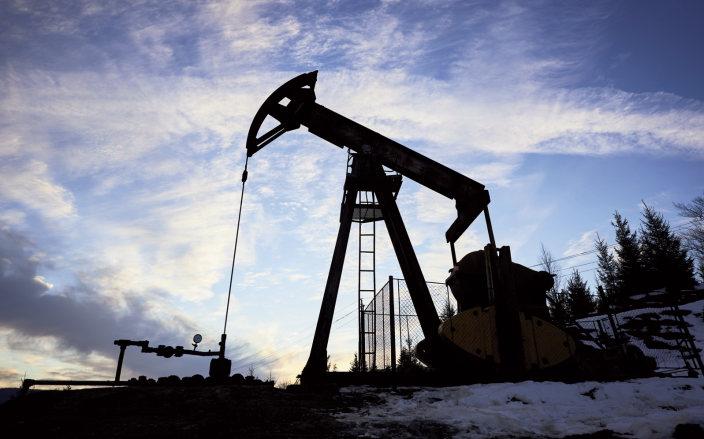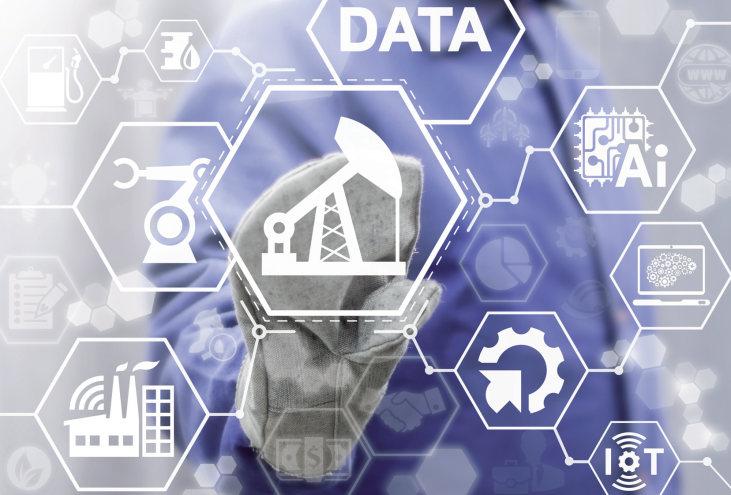
6 minute read
A unified approach for artificial lift optimisation
A unified approach for
artificial lift optimisation
The integration of data-driven, expertise-based and physics-based approaches for artificial lift optimisation can be a differentiator in a prolonged low oil price environment, says Dr Venkat Putcha, PhD in Petroleum Engineering, director of data science at OspreyData.
OIL PRICES HAVE been operating in the US$30-US$65 per barrel range for the majority of time since 2016. The U.S. Energy Information Administration projects Brent oil price will average US$53 per barrel for both 2021 and 2022. The oil and gas industry has been further motivated to innovate to improve efficiency and reduce costs as a result of low oil prices. According to IHS CERA, digital oilfield implementations have led to a 2-8% production increase, 5-25% reduction in operating expenditures, and 1-10% reduction in capital expenditures. The popular strategy for advancing towards a digital oilfield entails the automation of processes and productionised workflows through a centralised system for data collection, integration, processing and analytics.
The Digital Oilfield Outlook Report by GE, Accenture and JWN lists the top four priorities among oilfield digitalisation as fleet management, field productivity, production asset optimisation and predictive maintenance. Currently, 85-90% of oil wells utilise some type of artificial lift. Misconfigured artificial lift systems directly translate to reduced asset production and sub-optimal field productivity. Traditionally, production operators, engineers and managers have used their expertise and engineering intuition, along with physics-based models, to identify inefficiencies and opportunities to improve. These may include simple examples, such as using fundamental physical equations and empirical rules of thumb for decision making, or more sophisticated examples such as employing nodal analysis software for modelling, design and optimisation.
Over the past decade, large volumes of oilfield data have been gathered. Such data includes sensor signals, production data, asset metadata such as deviation, location and completion, event data such as logs of various equipment failures, downtime and maintenance activity. This has enabled the development of data-driven models that help better manage systems through systematically detecting anomalies, identifying inefficiencies and automating the classification of worst offenders.
85-90% of oil wells utilise some kind of artificial lift.
An expertise-based approach: pros and cons
Expertise-based, physics-based and datadriven approaches have their benefits and limitations when implemented exclusively. Experts employ their experience to provide quick recommendations on systems. This is a simple, fast and hands-on approach when experts are available to monitor wells. Expertdefined rules are a good fall-back when data is not available or sufficient. However, expert supervision is not a scalable solution, as it is not possible to manually monitor and optimise all wells at all times. Furthermore, expertdefined rules may be limited to a specific range of wells, types of wells, fields or plays. Expert-based rules that operate in the North Sea may not be as effective in the Ghawar oilfield of Saudi Arabia.
A physics-based approach: pros and cons
Physics-based models are much more widely applicable than expertise-based systems. However, these models pose a different challenge. Physics-based models must be calibrated with field data in order to make the models meaningful. This process may need updates as well characteristics change, without which the model would fail to simulate and predict well behaviour accurately. In some cases the detailed information or detailed physics-based models required to accurately represent the physical system and study
certain problems may not be available. For example, an advanced simulation model of an electrical submersible pump (ESP) well can estimate the liquid production as a function of the pump head boost, however, it may not be possible to simulate the well’s behaviour while the ESP is undergoing gas locking.
A data-driven approach: pros and cons
Data-driven models make excellent candidates for systems where detailed physics-based modelling is not possible. For example, logs of past ESP gas-locks, their corresponding sensor data and other metadata can be utilised in the early detection of gas-locks. Using machine-learning algorithms that harness sensor and event data for predictive maintenance and better field management can lead to significant reductions in operational costs, as IHS CERA writes.
Data-driven models have limitations too. Firstly, they are impacted by data’s availability, quality and consistency and the diligence exercised while logging or labelling events. (It is important to note that physics-based models are also impacted by data availability and data quality). Secondly, there is a tradeoff between the predictive capabilities and interpretability of data-driven models. The black-box nature of powerful predictive models, such as random-forests or neural networks raises scepticism towards those models, especially in communities belonging to the expertise-based and physics-based schools of thought.
The three above-mentioned approaches have several limitations. The rest of this article will describe the methods to overcome them through the integration of these approaches. Key concepts to be introduced are expertaugmented machine learning; live simulation and history matching with automated recommendations; and anomaly detection assisted optimisation.

Expert-augmented machine learning
Integrating the expertise-driven approach and data-driven approach, expert-augmented machine learning creates a feedback loop where expert input feeds into and improves the machine learning model. Initially, the experts use the historical sensor data to label events. There may also be cases where the experts are unsure if a given historic time period is an event of interest or a different event type. For example, when training a model to detect gas-locks, gas-in-pump or solids-in-pump, there may be other events that deviate from normal well behaviour. All this expert feedback is embedded in the model training and update process. Once a model has been trained and starts making predictions, experts review every prediction the model emits. The model receives negative reinforcement on false positives and false negatives, and positive reinforcement on true positives. Over time, the model becomes a mechanised representation of the expert. The data-driven model can be deployed on a software platform and can detect these trained events perpetually and on thousands of wells.
Digital oilfield implementations have resulted in significant production increases and cost savings.
As mentioned previously, physics-based models need calibration and constant updating with changing well characteristics. Typically, this has been a manual process. With advanced data management and data science capabilities, the physics-based simulation and the model calibration process can be automated. This requires live sensor and production data to be cleaned, processed and integrated with well metadata. This information queues simulations relevant to the operating states of the well that update as states change. Physics-based models are executed on the fly with the work distributed to machines on the cloud. The results of the simulation are stored on a database. These results can be history matched with field conditions using probabilistic and machine learning algorithms. Such history-matched models can be utilised to generate setpoint change recommendations or design evaluations. Examples for this can be gas-lift injection rate optimisation or plunger cycle optimisation.
Anomaly detection assisted optimisation
Anomalies detected through data-driven models help differentiate between normal and abnormal operating conditions. A model simulated using input from abnormal operating conditions or a mixture of normal and abnormal conditions may be incorrectly calibrated due to the incorrect averaging of pressure, flow rates and production rates. A physics-based optimisation system must be integrated with an anomaly detection system to provide accurate design or optimisation recommendations.
Leveraging a unified platform
A unified software platform capable of integrating the three key approaches to artificial lift optimisation using the novel methods of expert augmented machine learning, live simulation and history matching with automated recommendation, and anomaly detection assisted optimisation can be a differentiator in a prolonged low-price oil and gas market. n
OspreyData is a leader in helping oil and gas firms improve operations and raise profitability by leveraging the digital oilfield. Its Production Intelligence Solutions empower both operators and engineers with unified monitoring and advanced analytics tools that optimise well production and find operational issues faster. For more information about OspreyData and the Production Intelligence Solutions, visit www.ospreydata.com










